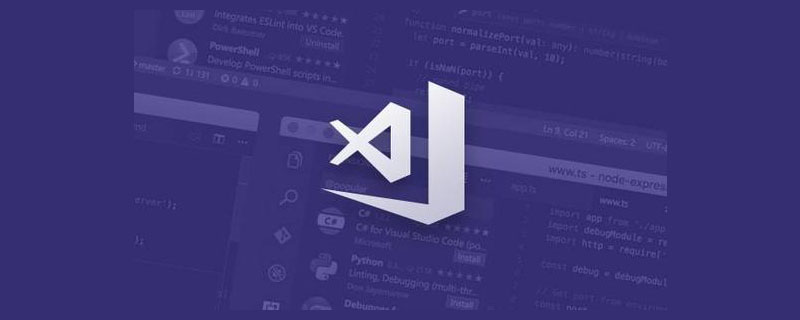 Backend Development
Backend Development PHP Tutorial
PHP Tutorial Using PHP to develop an enterprise resource planning (ERP) system that implements recruitment management functions
Using PHP to develop an enterprise resource planning (ERP) system that implements recruitment management functionsUse PHP to develop an enterprise resource planning (ERP) system that implements recruitment management functions
Introduction:
The enterprise resource planning (ERP) system is an indispensable part of modern enterprise management. With the development of the Internet and information technology, companies' needs for recruitment management are becoming more and more important. This article will introduce how to use PHP to develop an ERP system with recruitment management functions and provide relevant code examples.
1. System requirements analysis
Before developing an ERP system, it is first necessary to conduct a system requirements analysis to clarify the functions and characteristics of the system. Recruitment management systems usually need to include the following functions:
1. Publish job information: Administrators can publish recruitment position information and fill in relevant job descriptions, requirements, salary and other information.
2. Job application management: The system allows users to register and submit job applications, and administrators can browse and manage job applications.
3. Resume management: Users can upload and manage personal resumes, and administrators can view and filter suitable resumes.
4. Interview management: Administrators can arrange interview times and record interview results and evaluations.
5. Job submission progress tracking: Users can check their job application progress and understand their job application status.
6. Data statistics and reports: The system can generate recruitment data statistics and reports to provide a basis for the company's recruitment decisions.
2. System design and architecture
After understanding the system functional requirements, the next step is to carry out system design and architecture. Common ERP systems adopt a layered architecture, which is divided into presentation layer, business logic layer and data access layer.
1. Display layer: Use HTML, CSS, JavaScript and other technologies to achieve the display effect of the front-end page.
2. Business logic layer: Use PHP to write business logic code to realize the core functions of the system.
3. Data access layer: Use MySQL or other relational database management systems (RDBMS) to store and access data.
3. Database design
Before designing the database, it is necessary to clarify the data model of the system. Recruitment management systems usually include the following main data models:
1. Job information (Job): including job title, description, requirements, salary, release time and other fields.
2. User information (User): including user name, password, contact information and other fields.
3. Application: includes fields such as position ID, user ID, application time, etc.
4. Resume: includes user ID, name, contact information, educational background, work experience and other fields.
5. Interview: includes fields such as position ID, user ID, interview time, and interview results.
Based on the above data model, the corresponding database table structure can be designed.
CREATE TABLE job (id int(11) NOT NULL AUTO_INCREMENT,title varchar(255) NOT NULL ,description text NOT NULL,requirements text NOT NULL,salary decimal(10,2) NOT NULL,created_at datetime NOT NULL,
PRIMARY KEY (id)
) ENGINE=InnoDB DEFAULT CHARSET=utf8;
CREATE TABLE user (id int(11) NOT NULL AUTO_INCREMENT,username varchar(255) NOT NULL,password varchar (255) NOT NULL,email varchar(255) NOT NULL,phone varchar(20) NOT NULL,
PRIMARY KEY (id )
) ENGINE=InnoDB DEFAULT CHARSET=utf8;
CREATE TABLE application (id int(11) NOT NULL AUTO_INCREMENT, job_id int(11) NOT NULL,user_id int(11) NOT NULL,created_at datetime NOT NULL,
PRIMARY KEY (id),
KEY job_id (job_id),
KEY user_id (user_id )
) ENGINE=InnoDB DEFAULT CHARSET=utf8;
CREATE TABLE resume (id int(11) NOT NULL AUTO_INCREMENT, user_id int(11) NOT NULL,name varchar(255) NOT NULL,email varchar(255) NOT NULL ,phone varchar(20) NOT NULL,education text NOT NULL,experience text NOT NULL,
PRIMARY KEY (id),
KEY user_id (user_id)
) ENGINE=InnoDB DEFAULT CHARSET=utf8;
CREATE TABLE interview (id int(11) NOT NULL AUTO_INCREMENT,job_id int(11) NOT NULL, user_id int(11) NOT NULL,interview_time datetime NOT NULL,
PRIMARY KEY (id),
KEY job_id (job_id),
KEY user_id (user_id)
) ENGINE=InnoDB DEFAULT CHARSET=utf8;
four , Code example [Reference code]
The following is a simple PHP code example, part of the code that implements the job information publishing and job application functions. Complete system development requires more functional code implementation.
1. Code example for publishing job information:
// Connect to the database
$conn = mysqli_connect("localhost", "root", "password ", "mydb");
if (!$conn) {
die("数据库连接失败:" . mysqli_connect_error());}
// Insert form data into the database
if ($_SERVER["REQUEST_METHOD"] == " POST") {
$title = $_POST["title"];
$description = $_POST["description"];
$requirements = $_POST["requirements"];
$salary = $_POST["salary"];
$sql = "INSERT INTO job (title, description, requirements, salary, created_at)
VALUES ('$title', '$description', '$requirements', $salary, NOW())";
if (mysqli_query($conn, $sql)) {
echo "发布职位成功!";
} else {
echo "Error: " . $sql . "<br>" . mysqli_error($conn);
}}
// 关闭数据库连接
mysqli_close($conn);
?>
2.求职申请的代码示例:
// 连接数据库
$conn = mysqli_connect("localhost", "root", "password", "mydb");
if (!$conn) {
die("数据库连接失败:" . mysqli_connect_error());}
// 将求职申请数据插入数据库
if ($_SERVER["REQUEST_METHOD"] == "POST") {
$job_id = $_POST["job_id"];
$user_id = $_POST["user_id"];
$sql = "INSERT INTO application (job_id, user_id, created_at)
VALUES ($job_id, $user_id, NOW())";
if (mysqli_query($conn, $sql)) {
echo "提交求职申请成功!";
} else {
echo "Error: " . $sql . "<br>" . mysqli_error($conn);
}}
// 关闭数据库连接
mysqli_close($conn);
?>
结语:
本文介绍了使用PHP开发招聘管理功能的ERP系统的基本流程和代码示例。实际的系统开发需要根据具体需求进行更加细致的设计和开发。希望本文对于希望使用PHP开发ERP系统的开发人员有所帮助。
The above is the detailed content of Using PHP to develop an enterprise resource planning (ERP) system that implements recruitment management functions. For more information, please follow other related articles on the PHP Chinese website!
 微信小程序中PHP开发的翻页特效实现方法Jun 01, 2023 pm 01:51 PM
微信小程序中PHP开发的翻页特效实现方法Jun 01, 2023 pm 01:51 PM在微信小程序中,PHP开发的翻页特效是非常常见的功能。通过这种特效,用户可以轻松地在不同的页面之间进行切换,浏览更多的内容。在本文中,我们将介绍如何使用PHP来实现微信小程序中的翻页特效。我们将会讲解一些基本的PHP知识和技巧,以及一些实际的代码示例。理解基本的PHP语言知识在PHP中,我们经常会用到IF/ELSE语句、循环结构,以及函数等一些基本语言知识。
 微信小程序中PHP开发的常用工具库介绍Jun 01, 2023 pm 07:40 PM
微信小程序中PHP开发的常用工具库介绍Jun 01, 2023 pm 07:40 PM随着微信小程序的普及和发展,越来越多的开发者开始涉足其中。而PHP作为一种后端技术的代表,也在小程序中得到了广泛的运用。在小程序的开发中,PHP常用工具库也是很重要的一个部分。本文将介绍几款比较实用的PHP常用工具库,供大家参考。一、EasyWeChatEasyWeChat是一个开源的微信开发工具库,用于快速开发微信应用。它提供了一些常用的微信接口,如微信公
 如何利用PHP开发商城的满额赠礼功能May 22, 2023 am 10:02 AM
如何利用PHP开发商城的满额赠礼功能May 22, 2023 am 10:02 AM网上购物已经成为人们日常生活中不可或缺的一部分,因此,越来越多的企业开始关注电商领域。开发一款实用、易用的商城网站也成为了企业提高销售额、拓展市场的必要手段之一。在商城网站中,满额赠礼功能是提高用户购买欲望和促进销售增长的重要功能之一。本文将探讨如何利用PHP开发商城的满额赠礼功能。一、满额赠礼功能的实现思路在商城开发中,如何实现满额赠礼功能呢?简单来说就是
 微信小程序中PHP开发的加密和解密实现方法Jun 01, 2023 am 08:12 AM
微信小程序中PHP开发的加密和解密实现方法Jun 01, 2023 am 08:12 AM随着微信小程序在移动应用市场中越来越流行,它的开发也受到越来越多的关注。在小程序中,PHP作为一种常用的后端语言,经常用于处理敏感数据的加密和解密。本文将介绍在微信小程序中如何使用PHP实现加密和解密。一、什么是加密和解密?加密是将敏感数据转换为不可读的形式,以确保数据在传输过程中不被窃取或篡改。解密是将加密数据还原为原始数据。在小程序中,加密和解密通常包括
 微信小程序中PHP开发的滑动验证码实现方式Jun 01, 2023 pm 09:01 PM
微信小程序中PHP开发的滑动验证码实现方式Jun 01, 2023 pm 09:01 PM随着互联网的快速发展,网络安全问题也变得越来越严峻。针对恶意攻击、刷单等安全威胁,很多网站和应用程序都使用了验证码来保护用户信息和系统安全。在微信小程序中,如何实现一个安全可靠的滑动验证码呢?本文将介绍使用PHP开发的滑动验证码实现方式。一、滑动验证码的原理滑动验证码是指在验证用户身份时,通过用户在滑块上滑动完成验证过程。其原理是将一张图片分成两部分,一部分
 PHP开发中提供效率的VSCode插件推荐(值得收藏)Mar 30, 2021 pm 07:31 PM
PHP开发中提供效率的VSCode插件推荐(值得收藏)Mar 30, 2021 pm 07:31 PM本篇文章给大家推荐一些VSCode+PHP开发中实用的插件。有一定的参考价值,有需要的朋友可以参考一下,希望对大家有所帮助。
 微信小程序中PHP开发的文本框自动完成功能实现方法Jun 01, 2023 pm 07:42 PM
微信小程序中PHP开发的文本框自动完成功能实现方法Jun 01, 2023 pm 07:42 PM随着微信小程序的普及,各类开发需求也日渐增多。其中,文本框自动完成功能是小程序中常用的功能之一。虽然微信小程序提供了一些原生的组件,但是有一些特殊需求还是需要进行二次开发。本文将介绍如何使用PHP语言实现微信小程序中文本框自动完成功能。准备工作在开始开发之前,需要准备一些基本的环境和工具。首先,需要安装好PHP环境。其次,需要在微信小程序后台获取到自己的Ap
 微信小程序中PHP开发的自动更新方法Jun 01, 2023 pm 11:40 PM
微信小程序中PHP开发的自动更新方法Jun 01, 2023 pm 11:40 PM近年来,移动互联网的快速发展和移动终端的普及,让微信应用程序成为了人们生活中不可或缺的一部分。而在微信应用程序中,小程序更是以其轻量、快速、便捷的特点受到了广泛的欢迎。但是,对于小程序中的数据更新问题,却成为了一个比较头疼的问题。为了解决这一问题,我们可以使用PHP开发的自动更新方法来实现自动化数据更新。本篇文章就来探讨一下微信小程序中PHP开发的自动更新方


Hot AI Tools

Undresser.AI Undress
AI-powered app for creating realistic nude photos

AI Clothes Remover
Online AI tool for removing clothes from photos.

Undress AI Tool
Undress images for free

Clothoff.io
AI clothes remover

AI Hentai Generator
Generate AI Hentai for free.

Hot Article

Hot Tools

Atom editor mac version download
The most popular open source editor

Dreamweaver Mac version
Visual web development tools

VSCode Windows 64-bit Download
A free and powerful IDE editor launched by Microsoft

SAP NetWeaver Server Adapter for Eclipse
Integrate Eclipse with SAP NetWeaver application server.

EditPlus Chinese cracked version
Small size, syntax highlighting, does not support code prompt function




